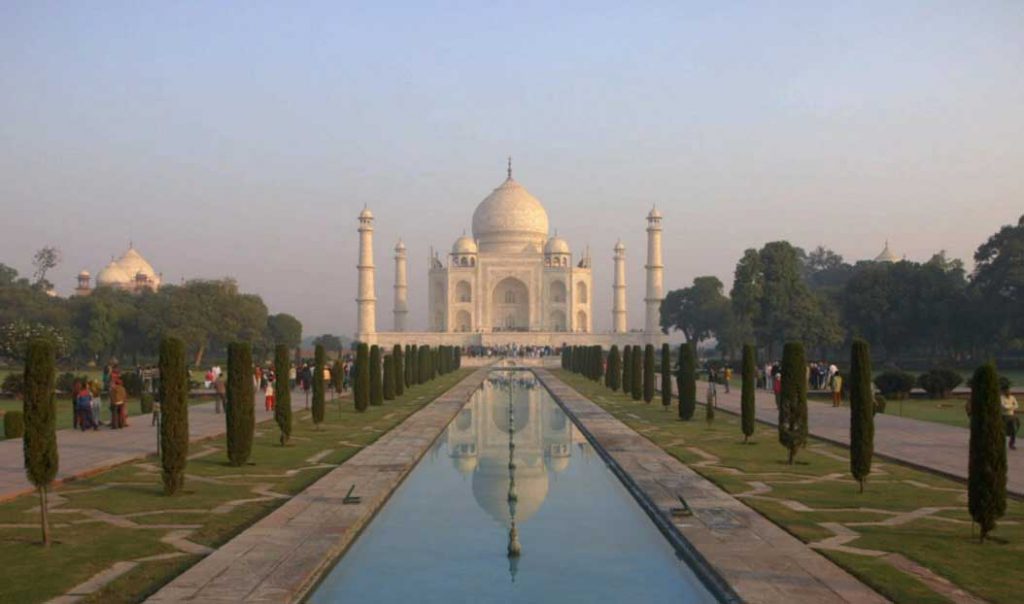Treasures of the Indus – The Other Side of the Taj Mahal: This is the story of the Indian subcontinent told through the treasures of three very different people, places and dynasties that have shaped the modern Indian world. The Mughals created the most famous and dazzling empire that India has ever seen, from the Taj Mahal to fabulously intricate miniatures of court life. But in the process, did they bring civilisation to India or tear it apart?
From the moment the first Mughal emperor Babur arrived from Afghanistan the debate began – were the Mughals imposing their own religion of Islam on a Hindu country, or were they open to the religion and art of the country they were conquering? The artworks the Mughals left behind over their 200-year empire – even the very buildings which have traces of Hindu architecture as well as Muslim – clearly show how this debate played out, and Sona Datta traces how this most spectacular of all Indian civilisations also sowed the seeds of discord.
Treasures of the Indus – The Other Side of the Taj Mahal
Mughal Empire
The Mughal Empire was an early-modern empire that controlled much of South Asia between the 16th and 19th centuries. For some two hundred years, the empire stretched from the outer fringes of the Indus river basin in the west, northern Afghanistan in the northwest, and Kashmir in the north, to the highlands of present-day Assam and Bangladesh in the east, and the uplands of the Deccan plateau in south India.
The Mughal empire is conventionally said to have been founded in 1526 by Babur, a warrior chieftain from what today is Uzbekistan, who employed aid from the neighboring Safavid and Ottoman empires, to defeat the Sultan of Delhi, Ibrahim Lodhi, in the First Battle of Panipat, and to sweep down the plains of Upper India. The Mughal imperial structure, however, is sometimes dated to 1600, to the rule of Babur’s grandson, Akbar. This imperial structure lasted until 1720, until shortly after the death of the last major emperor, Aurangzeb, during whose reign the empire also achieved its maximum geographical extent. Reduced subsequently to the region in and around Old Delhi by 1760, the empire was formally dissolved by the British Raj after the Indian Rebellion of 1857.
Although the Mughal empire was created and sustained by military warfare, it did not vigorously suppress the cultures and peoples it came to rule; rather it equalized and placated them through new administrative practices, and diverse ruling elites, leading to more efficient, centralised, and standardized rule. The base of the empire’s collective wealth was agricultural taxes, instituted by the third Mughal emperor, Akbar. These taxes, which amounted to well over half the output of a peasant cultivator, were paid in the well-regulated silver currency, and caused peasants and artisans to enter larger markets.
Indus River
The Indus is a transboundary river of Asia and a trans-Himalayan river of South and Central Asia. The 3,180 km (1,980 mi) river rises in Western Tibet, flows northwest through the disputed region of Kashmir, bends sharply to the left after the Nanga Parbat massif, and flows south-by-southwest through Pakistan, before emptying into the Arabian Sea near the port city of Karachi.
The river has a total drainage area exceeding 1,165,000 km2 (450,000 sq mi). Its estimated annual flow is around 243 km3 (58 cu mi), making it one of the 50 largest rivers in the world in terms of average annual flow. Its left-bank tributary in Ladakh is the Zanskar River, and its left-bank tributary in the plains is the Panjnad River which is formed by the successive confluences of the five Punjab rivers, namely the Chenab, Jhelum, Ravi, Beas, and Sutlej rivers. Its principal right-bank tributaries are the Shyok, Gilgit, Kabul, Kurram, and Gomal rivers. Beginning in a mountain spring and fed with glaciers and rivers in the Himalayan, Karakoram, and Hindu Kush ranges, the river supports the ecosystems of temperate forests, plains, and arid countryside.
Taj Mahal
The Taj Mahal is an Islamic ivory-white marble mausoleum on the right bank of the river Yamuna in the Indian city of Agra. It was commissioned in 1632 by the Mughal emperor Shah Jahan (r. 1628–1658) to house the tomb of his favourite wife, Mumtaz Mahal; it also houses the tomb of Shah Jahan himself. The tomb is the centrepiece of a 17-hectare (42-acre) complex, which includes a mosque and a guest house, and is set in formal gardens bounded on three sides by a crenellated wall.
Construction of the mausoleum was essentially completed in 1643, but work continued on other phases of the project for another 10 years. The Taj Mahal complex is believed to have been completed in its entirety in 1653 at a cost estimated at the time to be around ₹32 million, which in 2020 would be approximately ₹70 billion (about US $1 billion). The construction project employed some 20,000 artisans under the guidance of a board of architects led by the court architect to the emperor, Ustad Ahmad Lahauri. Various types of symbolism have been employed in the Taj to reflect natural beauty and divinity.




